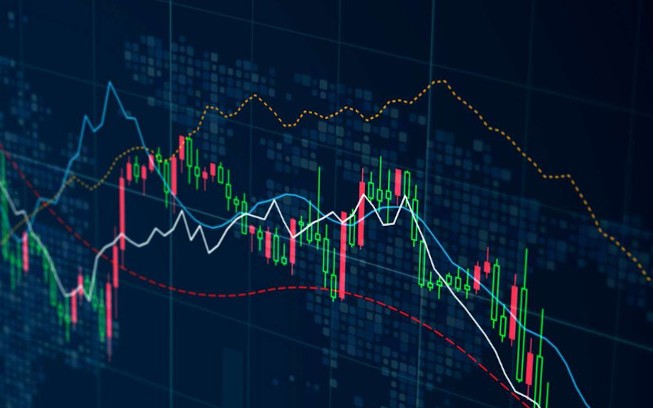
Mastering Forex Trading: A Comprehensive Training Guide
Forex trading, short for foreign exchange trading, has skyrocketed in popularity over the last few decades. Individuals are flocking to this market, eager to make profits from the fluctuations in currency prices. However, to navigate the volatile waters of Forex successfully, adequate training and knowledge are essential. Whether you’re a beginner or seeking to refine your skills, understanding the fundamentals and practical aspects of Forex trading will set you on the right path. For those looking to explore suitable brokers, check out forex trading training Brokers Argentina for resources and recommendations.
Understanding the Forex Market
The Forex market is the largest financial market globally, with an average trading volume exceeding $6 trillion per day. This decentralized market means that trades occur electronically over-the-counter (OTC), rather than through a centralized exchange. Traders exchange various currencies, and these transactions impact the exchange rates that fluctuate constantly based on supply and demand.
The Basics of Forex Trading
Before diving into trading strategies and advanced techniques, it’s crucial to understand some foundational concepts:
- Currency Pairs: In Forex trading, currencies are quoted in pairs, such as EUR/USD or GBP/JPY. The first currency in the pair is known as the base currency, while the second is the quote currency.
- Exchange Rate: This represents how much of the quote currency is needed to purchase one unit of the base currency. For example, if the EUR/USD exchange rate is 1.10, it means it costs $1.10 to buy 1 Euro.
- Pips: A pip is the smallest price move that a given exchange rate can make based on market convention. It is typically one basis point, or 0.0001 for most pairs.
- Leverage: Forex trading often involves the use of leverage, which allows traders to control larger positions with a relatively small amount of capital. While leverage can amplify profits, it also increases risk.
Setting Up Your Trading Environment
To begin your Forex trading journey, you’ll need to set up your trading environment. Here are the essential steps:
- Choose a Reliable Forex Broker: As a retail trader, you’ll need a broker to facilitate your trades. Research different brokers to find one that offers a user-friendly platform, competitive spreads, and reliable customer support.
- Open a Trading Account: Once you’ve selected a broker, you can open a trading account. Many brokers offer demo accounts for practice, which is an excellent way to familiarize yourself with the trading platform without risking real money.
- Download Trading Software: Most brokers provide trading platforms that may be downloaded or accessed via web-based software. Popular platforms include MetaTrader 4 and MetaTrader 5.

Learning Trading Strategies
Effective Forex trading requires a strong grasp of various trading strategies. Here are some commonly used approaches:
- Day Trading: Day traders execute trades based on short-term price movements, typically closing all positions before the market closes for the day.
- Swing Trading: This strategy involves holding positions for several days or weeks to take advantage of expected price movements.
- Scalping: Scalpers make a large number of trades over very short periods, aiming to capture small price changes throughout the day.
- Position Trading: Position traders hold trades for extended periods, often based on fundamental analysis and longer-term trends.
Risk Management in Forex Trading
Risk management is a vital aspect of successful Forex trading. Here are some techniques you can utilize:
- Set Stop-Loss Orders: Stop-loss orders automatically close a trade when the price reaches a predetermined level, helping limit potential losses.
- Use Proper Position Sizing: Determine the amount of capital you are willing to risk on any given trade and adjust your position size accordingly.
- Diversify Your Trading Portfolio: Avoid putting all your capital into a single trade or currency pair. Diversification can help spread risk.
- Maintain a Trading Journal: Keeping a record of your trades can help you analyze your performance, learn from mistakes, and refine your strategies.
Emotional Discipline and Psychological Resilience
Forex trading is not just about strategies and analysis; emotional discipline plays a critical role in a trader’s success. Here are some tips for maintaining psychological resilience:
- Stay Calm Under Pressure: Market fluctuations can evoke strong emotions. Practice mindfulness or stress-reduction techniques to keep a level head.
- Don’t Chase Losses: It’s tempting to increase your trading size to recover losses quickly, but this often leads to more significant losses. Stick to your strategy.
- Set Realistic Goals: Setting achievable profit targets will help manage expectations and reduce the urge to make impulsive decisions.
Keeping Up with Market Trends
The Forex market is dynamic, so staying informed about geopolitical events, economic indicators, and market trends is essential. Regularly follow financial news, update your understanding of economic reports, and adjust your trading strategies accordingly.
Conclusion
Forex trading can be a rewarding venture if approached with the right knowledge, skill set, and mindset. Comprehensive training in the foundational aspects of trading, combined with disciplined risk management and emotional resilience, can lead to long-term success in the Forex market. As you continue your trading journey, remember that practice makes perfect, and patience is the key to mastering the art of Forex trading.

Recent Comments